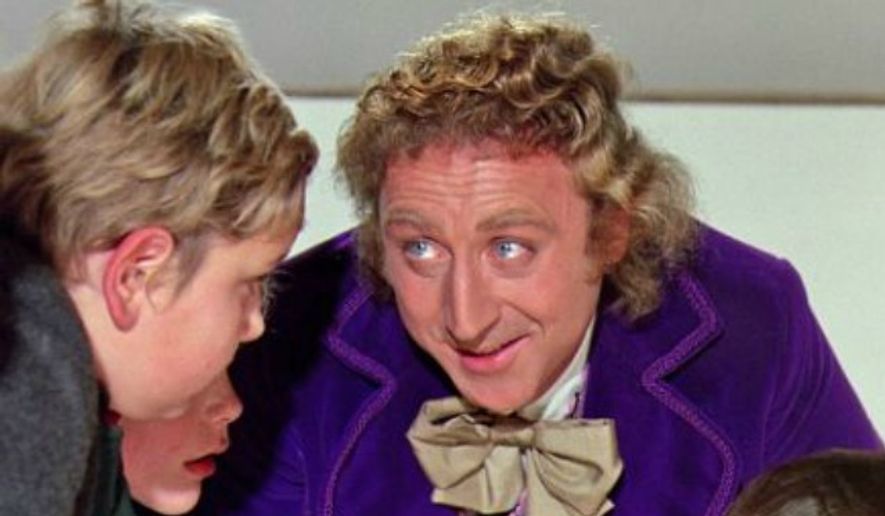LOS ANGELES (AP) - Revered as a comedic and storytelling genius by Hollywood’s top entertainers, Gene Wilder was a humble man who downplayed his comic gifts, was a serious director and remained deferential to his longtime collaborator, Mel Brooks.
“I am him in fantasy,” Wilder once said of playing the lead in Brooks’ films.
After Wilder’s death was announced Monday, Brooks called his colleague “one of the truly great talents of our time.”
“He blessed every film we did together with his special magic and he blessed my life with his friendship,” Brooks said in a statement. “He will be so missed.”
Wilder died Sunday night of complications from Alzheimer’s disease at age 83. His nephew, Jordan Walker-Pearlman, said Wilder was diagnosed with the disease three years ago, but kept the condition private so as not to disappoint fans.
Though Wilder started his acting career on the stage, millions knew him from his work in the movies, especially the ones he made with Brooks, such as “The Producers,” ’’Blazing Saddles” and “Young Frankenstein.” The last film — with Wilder playing a California-born descendant of the mad scientist, insisting that his name is pronounced “Frahn-ken-SHTEEN” — was co-written by Brooks and Wilder and earned the pair an Oscar nod for adapted screenplay.
PHOTOS: Celebrity deaths in 2016: The famous faces we've lost
With his unkempt hair and big, buggy eyes, Wilder was a master at playing panicked characters caught up in schemes that only a madman such as Brooks could devise, whether reviving a monster in “Young Frankenstein” or bilking Broadway in “The Producers.” Brooks would call him “God’s perfect prey, the victim in all of us.”
But he also knew how to keep it cool as the boozing gunslinger in “Blazing Saddles” or the charming candy man in “Willy Wonka and the Chocolate Factory.” His craziest role: the therapist having an affair with a sheep in Woody Allen’s “Everything You Wanted to Know About Sex.”
Wilder was close friends with Richard Pryor and their contrasting personas - Wilder uptight, Pryor loose — were ideal for comedy. They co-starred in four films: “Silver Streak,” ’’Stir Crazy,” ’’See No Evil, Hear No Evil” and “Another You.”
But Wilder insisted he was not a comedian. He told Robert Osborne in 2013 it was the biggest misconception about him.
“What a comic, what a funny guy, all that stuff! And I’m not. I’m really not. Except in a comedy in films,” Wilder said. “But I make my wife laugh once or twice in the house, but nothing special. But when people see me in a movie and it’s funny then they stop and say things to me about ’how funny you were.’ But I don’t think I’m that funny. I think I can be in the movies.”
He could be quite serious, said actress Carol Kane, his co-star in 1977’s “The World’s Greatest Lover.”
PHOTOS: Comic performer Gene Wilder kept his serious side off camera
“I don’t think Gene was depressed, but he was very serious and very sensitive and not afraid to expose what many people would call a feminine side, an emotional side,” she said Monday.
A Milwaukee native, Wilder was born Jerome Silberman on June 11, 1933. When he was 6, his mother suffered a heart attack that left her a semi-invalid. He soon began improvising comedy skits to entertain her, the first indication of his future career.
He started taking acting classes at age 12 and continued studying through college. In 1961, Wilder became a member of Lee Strasberg’s prestigious Actor’s Studio in Manhattan.
That same year, he adopted the stage name Gene Wilder and made both his off-Broadway and Broadway debuts. He won the Clarence Derwent Award, given to promising newcomers, for the Broadway work in Graham Greene’s comedy “The Complaisant Lover.” A key break came when he co-starred with Anne Bancroft in Bertolt Brecht’s “Mother Courage” in 1963.
A few years later, Brooks cast Wilder in “The Producers,” for which Wilder was nominated for a supporting actor Academy Award. Brooks also encouraged Wilder to become a director himself.
“He gave me the chutzpah to stand up on a chair and shout out: ’I don’t know what the answer is! Somebody help me,’ ” Wilder told The Associated Press in a 1977 interview. “And when you can do that, people usually love you for it and rush in to help.”
He went on to write several screenplays and direct five films. He married “Saturday Night Live” headliner Gilda Radner in 1984 and they costarred in two of his films: “The Woman in Red” and “Haunted Honeymoon.”
“He was compassionate and inspirational and poetic as a director,” Kane recalled. “And clearly one of the great clowns — the Chaplin of talkies in some way, I would say.”
Wilder’s desire to tell his stories well led him to pay special attention to directing himself.
“The tendency for most directors who direct themselves is to spend too little time on themselves, oddly enough. When you can finally say, ’Me, me,’ you want to say, ’Oh, that’s enough of me,’ because it’s more fun to direct the other actors than it is to direct yourself,” he said in the 1977 AP interview. “When I look at the film with an audience, and I look up at the screen, I say, ’This is what I intended.’”
___
AP film writers Lindsey Bahr in Los Angeles and Jake Coyle in New York and former AP reporter Larry McShane contributed to this story.




Please read our comment policy before commenting.